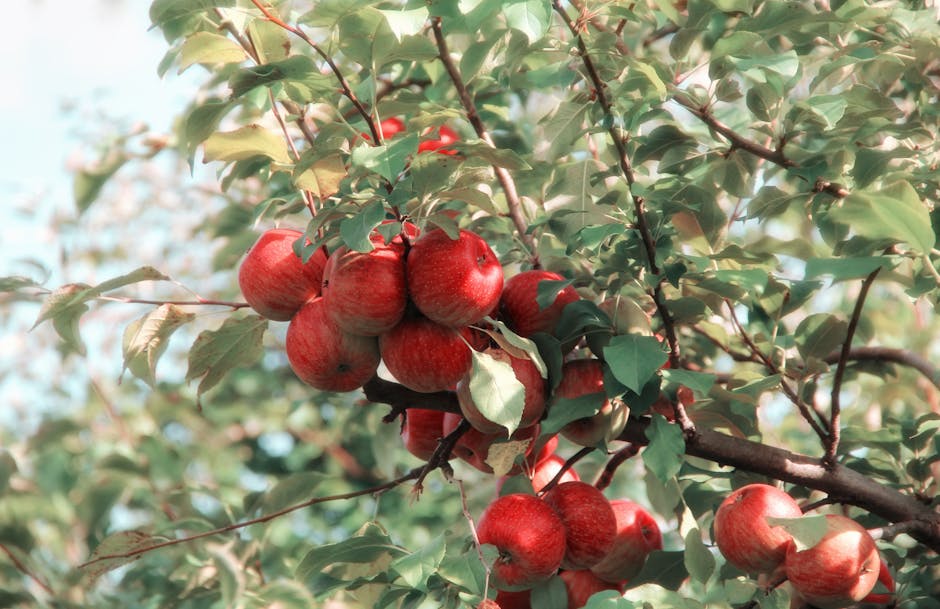Edible landscaping Minnesota is not just a garden trend; it’s a way to transform your outdoor space into a lush, productive paradise. Imagine stepping into your yard and picking fresh fruits and vegetables straight from your own plants. It’s the perfect blend of utility and beauty, enhancing both your backyard aesthetic and your lifestyle.
- What is Edible Landscaping? This involves integrating edible plants into your landscape. You create a beautiful garden that also provides food.
- Why Choose Edible Landscaping? It’s an eco-friendly way to reduce grocery costs, improve your property’s charm, and even support local wildlife.
- How to Start in Minnesota? Focus on plants that thrive in local climate conditions, like leafy greens, apples, and raspberries.
Starting a project like this might feel overwhelming, but it’s manageable with the right guidance. It’s about creating an environment that melds beauty and functionality. Dive into this beginner’s guide to find more about edible landscaping, choosing the best plants, and designing your dream garden.
Understanding Edible Landscaping
Edible landscaping is all about combining the beauty of ornamental landscapes with the practicality of growing your own food. This approach, often called foodscaping, transforms your yard into a stunning garden where every plant has a purpose.
What is Foodscaping?
Foodscaping is the art of designing gardens that are both beautiful and productive. Instead of traditional ornamental plants, you use edible plants that offer both aesthetic appeal and fresh produce. Imagine vibrant kale, lush fruit trees, and colorful berry bushes all integrated into your landscape design.
The Role of Ornamental Landscapes
Ornamental landscapes focus on visual appeal. They traditionally include flowers, shrubs, and trees chosen for their beauty. With edible landscaping, these elements are still important, but they are selected for their dual-purpose: attractiveness and edibility. For example, a columnar apple tree not only improves your yard’s visual appeal but also provides delicious apples.
Choosing Edible Plants
Selecting the right plants is key to successful edible landscaping. In Minnesota, you can choose from a variety of plants that thrive in the local climate:
- Leafy Greens: Spinach, kale, and lettuce are hardy and can grow through most of the year.
- Fruit-Bearing Trees: Cold-hardy varieties like apples are perfect for Minnesota’s climate.
- Peas: Ideal for early spring, peas are both a nutritious and visually appealing choice.
- Shrubs and Bushes: Native options like Blackcap raspberry and Elderberry are easy to incorporate and maintain.
By thoughtfully integrating these plants into your landscape, you create a space that not only looks good but also offers fresh, homegrown produce. This approach not only reduces grocery costs but also supports local wildlife and encourages a healthy lifestyle.
Whether you’re adding a few edible plants to your existing garden or planning a full-scale change, edible landscaping in Minnesota can turn your outdoor space into a productive oasis. Up next, we’ll explore the best edible plants to include in your Minnesota garden.
Best Edible Plants for Minnesota Gardens
When planning your edible landscaping in Minnesota, choosing the right plants is crucial. Minnesota’s climate, with its cold winters and warm summers, requires hardy, adaptable plants. Here are some top picks to get you started:
Leafy Greens
Leafy greens like spinach, kale, and lettuce are excellent choices for Minnesota gardens. These nutrient-rich plants thrive in cooler temperatures and can be among the first to sprout in spring.
- Spinach: Known for its versatility, spinach can be used in salads, cooked dishes, and smoothies.
- Kale: This superfood not only boosts nutrition but also adds a striking, textured look to your garden.
- Lettuce: Easy to grow and quick to harvest, lettuce is perfect for fresh salads.
Fruit-Bearing Trees
Minnesota’s climate may be harsh, but certain fruit trees can flourish:
- Columnar Apple Trees: These compact trees are ideal for smaller spaces and produce delicious apples. They rarely exceed 10 feet in height, making them manageable and aesthetically pleasing.
- Plum and Pear Trees: Some varieties can withstand Minnesota’s cold and offer sweet, juicy fruits in late summer.
Peas
Peas are a gardener’s delight in Minnesota. They are one of the earliest crops to mature in spring and offer both beauty and bounty.
- Snow Peas: With their delicate flowers and crisp pods, snow peas are a great addition to any garden. They are prolific producers, allowing you to enjoy fresh peas throughout the season and freeze extras for later.
Shrubs and Bushes
Incorporating native shrubs and bushes can improve your landscape while providing edible fruits:
- Blackcap Raspberry: These native raspberries are not only delicious but also easy to grow and maintain.
- Elderberry: Known for their immune-boosting properties, elderberries are a valuable addition to any edible landscape.
These plants not only provide fresh, homegrown produce but also attract pollinators, supporting local ecosystems. By integrating these selections into your garden, you can create a beautiful, productive space that thrives in Minnesota’s climate.
Up next, we’ll dive into designing your edible landscape, ensuring your garden is both functional and visually appealing.
Designing Your Edible Landscape
Creating a thriving edible landscape in Minnesota starts with a solid design plan. This ensures your garden is both functional and beautiful. Here’s how to get started:
Consultation
The first step in the design process is a consultation. This involves an on-site visit where experts assess your space, discuss your goals, and explore possible solutions. This personalized approach helps tailor the design to your specific needs and preferences. It’s about understanding your vision and the unique conditions of your yard.
Design Packages
Once the consultation is complete, the next step is choosing a design package. These packages are crafted to develop a comprehensive game plan for your landscape. They include:
- Collaboration: Work with designers to create a concept you love. Share your ideas and get expert input to refine your vision.
- Master Plan: A fully developed design that considers light, soil, and moisture conditions, ensuring the right plants are chosen for your space.
Master Plan
The master plan is the backbone of your edible landscape design. It lays out the placement of plants, pathways, and any hardscaping elements like patios or arbors. It ensures every aspect of your garden is thoughtfully arranged for maximum productivity and aesthetic appeal.
Plant List
A detailed plant list accompanies the master plan. This list includes all the plants in your design, along with their growing specifications and care notes. It’s a handy reference that guides you through planting and maintaining your garden.
Care Document
Finally, you’ll receive a care document. This provides detailed care instructions for each plant, helping you keep your garden healthy and productive. From watering schedules to pest management, this document is your go-to guide for garden upkeep.
Designing your edible landscape is a collaborative process that combines your vision with expert guidance. By investing time in a well-thought-out design, you ensure your garden is a beautiful, productive space that flourishes in Minnesota’s climate.
Next, we’ll cover installation and maintenance tips to bring your edible landscape to life.
Installation and Maintenance Tips
Now that you have a solid design plan for your edible landscaping in Minnesota, it’s time to turn that vision into reality. Here’s how to successfully install and maintain your edible garden:
Installation Services
Installation is the critical step where your design comes to life. Professional services ensure that your landscape is prepared and planted correctly. This includes:
- Soil Preparation: Proper soil preparation is key. It involves testing and amending the soil to create the best environment for your plants to thrive.
- Planting Techniques: Experts use correct planting techniques to ensure each plant has the right depth and spacing. This is vital for root development and overall plant health.
Hardscaping
Incorporating hardscaping elements can improve both the functionality and beauty of your edible landscape. These might include:
- Pathways and Patios: Simple hardscaping like pathways and patios provide structure and accessibility to your garden.
- Garden Foundations: Raised beds and garden borders help organize planting areas and improve drainage.
Ecological Services
To make your landscape sustainable and eco-friendly, consider ecological services:
- Rainwater Harvesting: Installing systems to capture and use rainwater reduces water waste and supports plant health.
- Invasive Species Removal: Removing invasive plants ensures that your chosen edible plants have the resources they need to grow.
Maintenance Tips
Once your edible garden is installed, ongoing maintenance is crucial for its success:
- Regular Watering: Consistent watering is essential, especially during dry spells. Consider an automatic irrigation system for even watering.
- Pruning and Harvesting: Regular pruning keeps plants healthy and encourages growth. Harvesting ripe produce also promotes continuous yield.
- Pest Management: Monitor for pests and manage them with natural methods to protect your garden without harmful chemicals.
By following these installation and maintenance tips, your edible landscape will not only flourish but also provide a sustainable source of fresh produce for years to come.
Next, we’ll address some frequently asked questions about edible landscaping in Minnesota.
Frequently Asked Questions about Edible Landscaping in Minnesota
What is edible landscaping called?
Edible landscaping is often referred to as foodscaping. This approach combines the beauty of ornamental landscapes with the practicality of growing edible plants. The idea is to create a garden that is both visually appealing and productive.
How do you make an edible garden?
Creating an edible garden in Minnesota involves blending nature’s bounty with thoughtful design. Start by focusing on perennials—plants that return year after year, reducing the need for replanting. They form the backbone of a low-maintenance garden.
Think of your garden as a living mix. Instead of tidy rows, consider planting in clusters or guilds. This mimics nature and can improve plant health and yield. For instance, a blueberry guild might include companion plants that naturally support soil health and deter pests.
What plants are edible in Minnesota?
Minnesota’s climate supports a variety of edible plants. Here are a few you might consider:
- Quaking Aspen: While not typically grown for food, its young leaves and inner bark can be used in survival situations.
- Wild Parsnip: Known for its edible roots, but be cautious—its sap can cause skin irritation.
- Creeping Charlie: This common ground cover has edible leaves that can be used in salads or teas.
- Red-Osier Dogwood: Its berries are not only a food source for wildlife but can also be used to make jams and jellies.
By incorporating these plants, your edible landscaping in Minnesota can thrive while providing a unique and sustainable food source.
Next, we’ll conclude with how timeless, architectural landscape design can improve your outdoor space and boost property value.
Conclusion
Creating a timeless and architectural landscape design isn’t just about aesthetics—it’s about crafting custom outdoor spaces that serve multiple purposes. In Minnesota, where the climate can be challenging, focusing on edible landscaping offers a unique opportunity to blend beauty with functionality. Imagine stepping into your backyard and picking fresh produce while enjoying a visually stunning garden.
Edible landscaping in Minnesota is more than a trend; it’s a sustainable approach that can improve property value. By integrating edible plants, you create an environment that is not only pleasing to the eye but also beneficial to your health and wallet. This dual-purpose design can make your property more appealing to potential buyers, who see the added value of a garden that feeds as well as delights.
Our expertise at Architectural Landscape Design, Inc. ensures that your outdoor space is crafted with exceptional craftsmanship and attention to detail. We specialize in creating landscapes that stand the test of time, enhancing your property’s beauty and utility for years to come.
So, whether you’re dreaming of a lush garden filled with leafy greens and fruit-bearing trees or a more structured space with raised beds and arbors, we can help you transform your vision into reality. Let’s cultivate your plate and your property value together!


